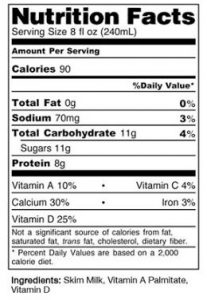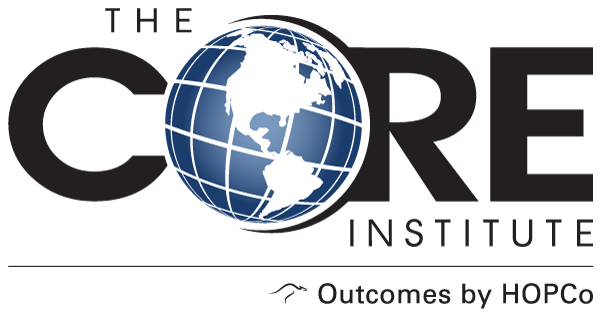Calcium and Vitamin D Intake
Explanation of Diagnosis
You are at risk for broken bones if you have osteoporosis, a disorder where your bones have lost strength due to age, lifestyle behaviors, medications or other conditions. The bones of your back, wrist, and hip are more easily broken in people with osteoporosis. It is most common in the elderly.
Treatment
 Calcium and vitamin D are essential for maintaining healthy bones. Calcium plays an important role in building stronger, denser bones early in life and keeping bones strong and healthy later in life. Getting the daily recommended amount of calcium through diet and supplements is essential to maintaining bone strength and can play a vital role in preventing osteoporosis related fractures. To determine how much calcium is beverages and foods, check the nutrition facts panel of the food label for the daily value (DV) of calcium. Food labels list calcium as a percentage of the DV. This amount is based on 1,000 mg of calcium per day. The easy way to change calcium DV % to milligrams is add a 0. For example, 30% DV equals 300 mg of calcium. Food remains the best source of calcium. Dairy products are high in calcium, while certain green vegetables and other foods contain calcium in smaller amounts. Calcium-fortified foods and calcium supplements are helpful for people who are unable to get enough calcium in their diets. Some juices, breakfast foods, soymilk, cereals, snacks, breads and bottled water have calcium that has been added. Soymilk that is fortified with calcium should be shaken well because the calcium can settle to the bottom. Many people do not get enough Calcium in their diet and need to take a supplement or multivitamin with Calcium. Vitamin D also plays an important role in protecting your bones. Your body requires vitamin D to absorb calcium. When people do not get enough vitamin D, they can lose bone density. There are three ways to get vitamin D: 1. Sunlight: Skin makes vitamin D from the ultra-violet light (UVB rays) in sunlight. The body can store the vitamin and use it later. The amount of vitamin D your skin makes depends on age, time of day, season, latitude, skin pigmentation, and other factors. It is difficult to measure the amount of vitamin D that your skin makes. 2. Food: Vitamin D is naturally available in only a few foods. It is very difficult to get all the vitamin D you need from food. Foods that have vitamin D include fatty fish (examples are salmon, tuna, and mackerel), egg yolks, and liver. Vitamin D is also added to milk and to some brands of orange juice, soymilk, and cereals. 3. Supplements and medications: Vitamin D is available as a separate supplement, with the calcium supplement, and with some other medications (such as Fosamax, alendronate).
Calcium and vitamin D are essential for maintaining healthy bones. Calcium plays an important role in building stronger, denser bones early in life and keeping bones strong and healthy later in life. Getting the daily recommended amount of calcium through diet and supplements is essential to maintaining bone strength and can play a vital role in preventing osteoporosis related fractures. To determine how much calcium is beverages and foods, check the nutrition facts panel of the food label for the daily value (DV) of calcium. Food labels list calcium as a percentage of the DV. This amount is based on 1,000 mg of calcium per day. The easy way to change calcium DV % to milligrams is add a 0. For example, 30% DV equals 300 mg of calcium. Food remains the best source of calcium. Dairy products are high in calcium, while certain green vegetables and other foods contain calcium in smaller amounts. Calcium-fortified foods and calcium supplements are helpful for people who are unable to get enough calcium in their diets. Some juices, breakfast foods, soymilk, cereals, snacks, breads and bottled water have calcium that has been added. Soymilk that is fortified with calcium should be shaken well because the calcium can settle to the bottom. Many people do not get enough Calcium in their diet and need to take a supplement or multivitamin with Calcium. Vitamin D also plays an important role in protecting your bones. Your body requires vitamin D to absorb calcium. When people do not get enough vitamin D, they can lose bone density. There are three ways to get vitamin D: 1. Sunlight: Skin makes vitamin D from the ultra-violet light (UVB rays) in sunlight. The body can store the vitamin and use it later. The amount of vitamin D your skin makes depends on age, time of day, season, latitude, skin pigmentation, and other factors. It is difficult to measure the amount of vitamin D that your skin makes. 2. Food: Vitamin D is naturally available in only a few foods. It is very difficult to get all the vitamin D you need from food. Foods that have vitamin D include fatty fish (examples are salmon, tuna, and mackerel), egg yolks, and liver. Vitamin D is also added to milk and to some brands of orange juice, soymilk, and cereals. 3. Supplements and medications: Vitamin D is available as a separate supplement, with the calcium supplement, and with some other medications (such as Fosamax, alendronate).
Below are the recommended dosages, based on age and gender for daily intake of calcium and vitamin D. If you have had a fracture, you may have a different recommendation to maintain healthy blood levels. It is important to read food labels and include food intake when considering supplementation.
We also may refer you to see The CORE Institute Bone Health specialist or your primary care physician.
| Male | Female | |||
| Age | Calcium | Vitamin D | Calcium | Vitamin D |
| 19 – 50 years | 1,000 mg | 600-4000 International Units |
1,000 mg | 600-4000 International Units |
| 51 – 70 years | 1,000 mg | 600-4000 International Units |
1,200 mg | 600-4000 International Units |
| 71+ years | 1,200 mg | 800-4000 International Units |
1,200 mg | 800-4000 International Units |
Questions
The CORE Institute is dedicated to your outcome. If any questions or concerns arise, please call The CORE Institute at 1.866.974.2673.

